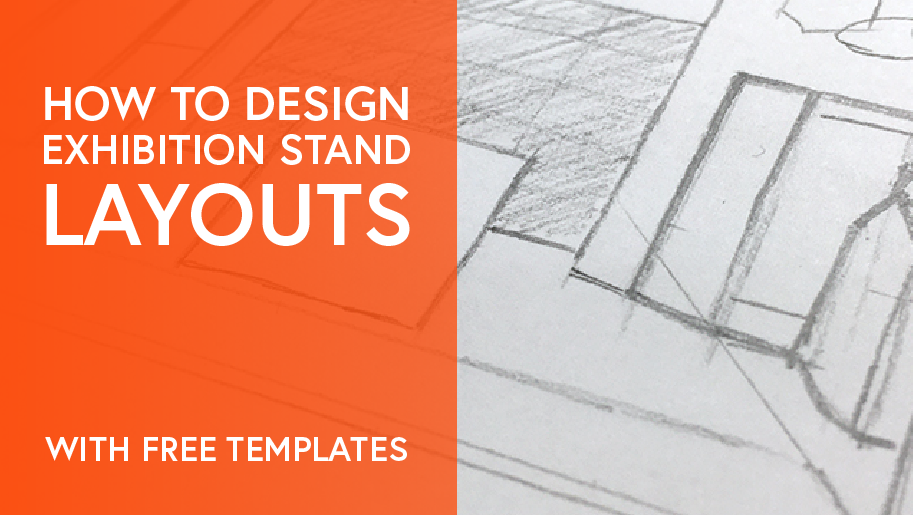If you’re new to the exhibiting game, you could be excused for not always understanding some of the terminology which is thrown around. Below, we’ve compiled some common tradeshow terms which you need to know!
Shell scheme stand
A more affordable means of exhibiting, shell schemes are spaces within an aluminium frame, usually within 6-12 square meters and with a height restriction of 2.5 metres. Shell schemes often come with basic flooring and lighting, and you can pay extra to include an electric supply and internet access.
Space only stand
In contrast to a shell scheme, space only refers to a stand which is open and infinitely more customisable. You have the means of building your own walls and introducing bespoke elements which wouldn’t fit into a shell scheme.
Foamex & Dibond
These are materials which your graphics can be printed onto. They form panels which are lightweight and affordable. Foamex panels are the most cost effective of the two, allowing for great printing quality and a media which is easily cut to size. They are however brittle, suitable for indoor use only, and aren’t ideal for use across multiple shows unless very well looked after.
Thanks to its aluminium composite construction, Dibond is a more durable solution for creating graphic panels. It can handle being displayed outdoors, provides a punchy and high finish, and if cared for, can be used time and time again.
Tension Fabric Graphics
Another method of displaying your graphics on your stand. Fabric graphics provide a seamless finish with a superb print quality, and can be folded away for safe storage. They have a high degree of durability, often being used for several shows if looked after carefully.
AV
Short for audio-visual, AV is an important consideration for most exhibition stands. AV can include a wall mounted TV for displaying rolling footage, a PA system to allow for presentations, or touch screens to allow an interactive means of demoing your product or service to potential clients.
When introducing AV to your stand, you’ll need to consider whether you’ve ordered a sufficient number of electrical sockets from the venue organisers, and how you’re going to handle cable management to tidy up the look of your stand and better fulfil health and safety requirements.
Subfloor
This is a raised floor, ideal for space only stands which contain a lot of AV and lighting. With a subfloor system, you’re able to run cables directly down and hide them under the flooring, making for a much cleaner aesthetic and easier means of manoeuvring around your stand.
I&D
Installation and dismantle, also known as the set up and take-down of your stand. The terms ‘de-rig’ and ‘breakdown’ can also be used to describe the hours after the show where you or your contractor is required to pack up and take away your stand assets.
Floor plan
This is provided by the venue and gives a top view map of the exhibition space and each stand within it. It gives you the opportunity to ensure you book and design a stand in a size, orientation and locality that suits your needs. As stand builders, we use the floor plan to ensure your graphics and stand elements are positioned and angled in a way which exploits the flow of traffic.
Premium stand
If the venue are pushing their premium stands, they’re referring to stands with excellent positioning to exploit traffic from heavy footfall areas of the site. For example, stands facing the entrance or are opposite a networking hub would be deemed premium and are charged at a higher rate.
Barcode scanner
Many venues provide a quick and easy means of capturing leads. Visitor passes often contain a barcode which if scanned by a hired barcode scanner, will provide you with their contact details to utilise after the show.
Hanging banner
This term describes any variety of structure featuring your graphics and hung above your stand, from the ceiling of your venue. Whether a cube, circular shape, 2D oblong, or something more custom, these can grab the eye of visitors from all corners of the venue and are one of the best means of drawing in a crowd to your stand.
Stand number
Each stand is assigned a unique number which helps visitors identify and find you.
Interactive element
It’s common for exhibitors to introduce interactive elements to their stand which aims to draw in visitors and create a conversation starter. This could include a variety of games, played for fun or to win prizes. Examples can include a spin-the-wheel game, throwing games, fairground games such as whack-a-mole, and arcade machines.
Literature stands
If you have business cards, brochures or other printed handouts, you’ll need to consider how they’re presented and distributed. Literature stands are one means of holding and displaying these materials.














